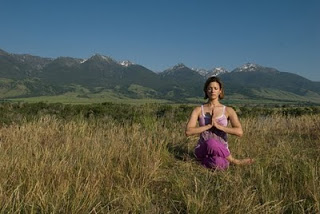
I was musing about what to write next in the yoga philosophy category, and it was starting to feel complicated. So I thought I’d backpedal a little, and address the basic question of what is yoga anyway? Lots of long books have been written about this question over the last few thousand years. But since my approach is to figure out how all these things apply to 21st century living, I’m going to break it down. A lot. But I also think that’s what it’s all about – what can you take from the many aspects of yoga and make your own practice? What follows are 2 of the top FAQs I’ve been asked during my yoga teaching journey.
What is yoga anyway? With roots that go back almost 5,000 years, yoga is one of the oldest holistic health care systems in existence. The Sanskrit word ‘yoga’ literally means ‘union’. In the practice of yoga, a connection is established between mind, body and spirit. As with all ancient traditions, at first yoga was communicated orally. Then about 2,000 years ago the Indian sage Patanjali compiled the Yoga Sutra, a written collection of 195 practical life lessons that form the foundation of yoga philosophy. The Yoga Sutra also outlines the eight-limbed path:
2) Niyamas (observances)
3) Asana (physical postures)
4) Pranayama (breath work)
5) Pratyahara (sense withdrawal, turning inward)
6) Dharana (concentration)
7) Dhyana (meditation)
8) Samadhi (liberation, enlightenment)
In exploring these eight limbs, we start by examining and refining our behavior in the outer world, and then turn our focus inwards until we reach samadhi. Today, most Westerners practicing yoga are engaged in the third limb, asana, the physical postures. The original intent of asana was to prepare the body to sit comfortably for long periods of meditation, ultimately transcending the physical body towards enlightenment.
That said, what if…
I love the physical yoga (asana). What about yoga philosophy – is it really applicable to a modern yogi?
Asana is only one part of the eight-limbed path to yoga. After teaching yoga for many years as my full-time ‘job’. I’ve developed my own theory why asana is the emphasis of yoga today, as I’ve seen it in my own experience and that of my students. Our modern lifestyle has come so far away from the quieter, more contemplative eras before technology. There is virtually no attention span for philosophical and ‘lofty’ concepts if they don’t produce quick results. I’m convinced that today’s yoga is essentially a process for learning to slow down; we have to re-learn how to do this in the unforgivingly fast pace of the world we inhabit.
Even after recognizing this through my own yoga practice, it remains an ongoing challenge to incorporate into my life. There are very few people who begin their yoga practice with another of the eight limbs; asana is the most appealing and relevant to modern lives. Asana is the gateway to the philosophy behind yoga. Through asana we’re able to be present in our bodies and minds in new (old? ancient but forgotten?) ways, and this invites us to explore the other limbs when we’re more ready. These explorations may very well occur during our asana practice. Of course, the potential drawback to beginning a yoga practice with asana is that one might never move beyond it – perhaps the people who are only doing yoga as a workout or because it’s hip – but I believe there is something much more compelling to asana that will bring people along a path to the other limbs if they are open and allow the experience. Asana practice won’t change everyone, but I also believe the immense popularity of yoga cannot be attributed to asana alone. It’s the holistic experience of the eight limbs, whether recognized by the practitioner or not, that have contributed to yoga’s appeal.
What do you think? Which of the eight limbs would you like me to wrangle with next?